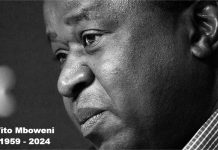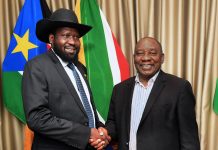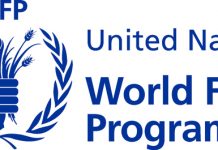Last year fake news was declared word of the year by Collins Dictionary, after an “unprecedented” 365% surge in usage, since 2016.
If US President Donald Trump’s Twitter feed is anything to go by, its newfound popularity is not tapering off. But the phenomenon of disseminating false or sensational news under the guise of legitimate reporting is not new, says Nechama Brodie, head of training, research and information at Africa Check.
Africa Check is a non-profit organisation that promotes accuracy in public debate and the media. Brodie trains editors and journalists in methods for the verification of information.
“I’ve been a journalist for over two decades, it’s not new,” she says. “Journalists making mistakes is not new. What is new is the speed at which we communicate and how quickly errors become problems, and how quickly mistakes, or misinformation can go viral.”
With journalists no longer being the only vessels through which news is carried, this problem is exacerbated. And the US is not the only nation impacted.
“America is obviously suffering a big crisis of information and a crisis of accuracy at the moment. But we see it in every country,” Brodie says.
Fake news is varied, with political propaganda being one of the common types people may be familiar with. Another kind is the unintentional spreading of incorrect information, said Yinka Adegoke, Africa editor for Quartz.
“Whatsapp, in particular, has really made it easy for people to spread false information unintentionally. That old aunt, that old uncle, whoever it is, sending you things, telling you some crazy thing is going on,” she says. “It’s not [true] but they feel they have to share it in case it is true.”

According to the 2018 Edelman Trust Barometer global report, published in January, 70% of people surveyed worried about fake news or being used as a weapon. To fight the fake news scourge, media literacy is becoming increasingly important. Like most things in life, if it’s too good to be true it probably is, says Adegoke. This is why one should verify information and not “just pass it on and think it makes no difference”.
Consumers of news should also understand that the tools journalists use to gather and check facts are not, “special and do not require a license or magic powers,” Brodie said. By asking the right questions audiences can verify the information they come across.
Brodie’s advice for media practitioners in overcoming the problem includes improving the quality of sources and information; using old-fashioned journalism habits of checking and cross checking stories, including numbers and spelling; avoiding echo chambers – rather relying on news gathered locally on certain issues, where locals would have more understanding; and not assuming balance or two sides to a story exists in every case.
“Climate change has one side, it’s happening. Vaccinations have one side, they work. There are other stories that have multiple sides. They may have eighteen or twenty sides,” she said.













… [Trackback]
[…] Read More Info here to that Topic: established.co.za/real-good-journalism-can-emerge-from-fake-news-threat/ […]
… [Trackback]
[…] Read More here to that Topic: established.co.za/real-good-journalism-can-emerge-from-fake-news-threat/ […]
… [Trackback]
[…] Read More here to that Topic: established.co.za/real-good-journalism-can-emerge-from-fake-news-threat/ […]
… [Trackback]
[…] Read More on that Topic: established.co.za/real-good-journalism-can-emerge-from-fake-news-threat/ […]